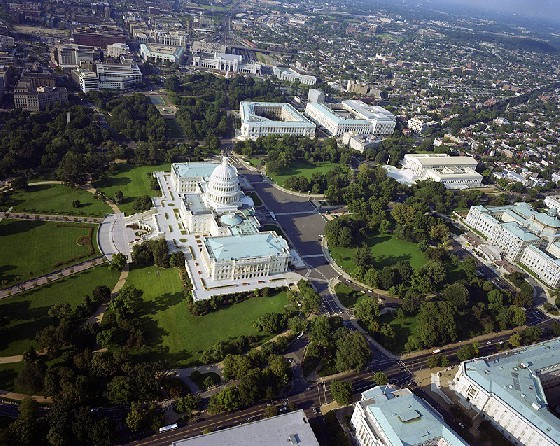U.S. Capitol


When the French architect and engineer Maj. Pierre Charles L'Enfant first began to lay out the plans for a new federal city (now Washington, DC), he noted that Jenkins' Hill, overlooking the area, seemed to be “a pedestal waiting for a monument.” It was here that the U.S. Capitol would be built. The basic structure as we know it today evolved over a period of more than 150 years. In 1792 a competition was held for the design of a capitol building. Dr. William Thornton, a physician and amateur architect, submitted the winning plan, a simple, low-lying structure of classical proportions with a shallow dome. Later, internal modifications were made by Benjamin Henry Latrobe. After the building was burned by the British in 1814, Latrobe and architect Charles Bulfinch were responsible for its reconstruction. Finally, under Thomas Walter, who was Architect of the Capitol from 1851 to 1865, the House and Senate wings and the imposing cast-iron dome topped with the Statue of Freedom were added, and the Capitol assumed the form we see today.
The Capitol building is rich in historic associations. It was in the old Senate chamber that Daniel Webster cried out, “Liberty and union, now and forever, one and inseparable!” In Statuary Hall, which used to be the old House chamber, a small disk on the floor marks the spot where John Quincy Adams was fatally stricken after more than 50 years of service to his country. A whisper from one side of this room can be heard across the vast space of the hall. Visitors can see the original Supreme Court chamber a floor below the Rotunda.

The Capitol Building is also a vast artistic treasure house. The works of such famous artists as Gilbert Stuart, Rembrandt Peale, and John Trumbull are displayed on the walls. The Great Rotunda, with its 180-foot- (54.9-meter-) high dome, is decorated with a fresco by Constantino Brumidi, which extends some 300 ft (90 m) in circumference. Throughout the building are many paintings of events in U.S. history and sculptures of outstanding Americans.The 68-acre (27.5-hectare) park that the Capitol is situated on was designed by the 19th-century landscape architect Frederick Law Olmsted.
There are free guided tours of the Capitol, which include admission to the House and Senate galleries. Those who wish to visit the visitors' gallery in either wing without taking the tour may obtain passes from their senators or representatives. Visitors may ride on the monorail subway that joins the House and Senate wings of the Capitol with the congressional office buildings.








